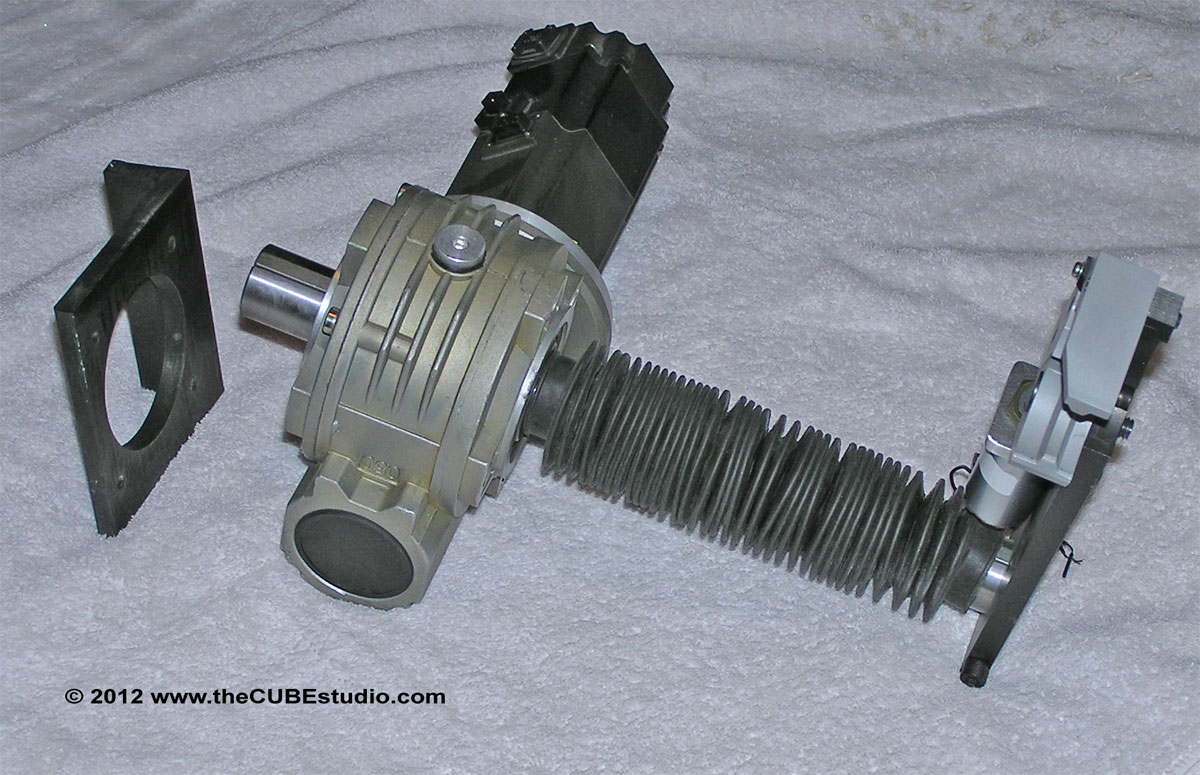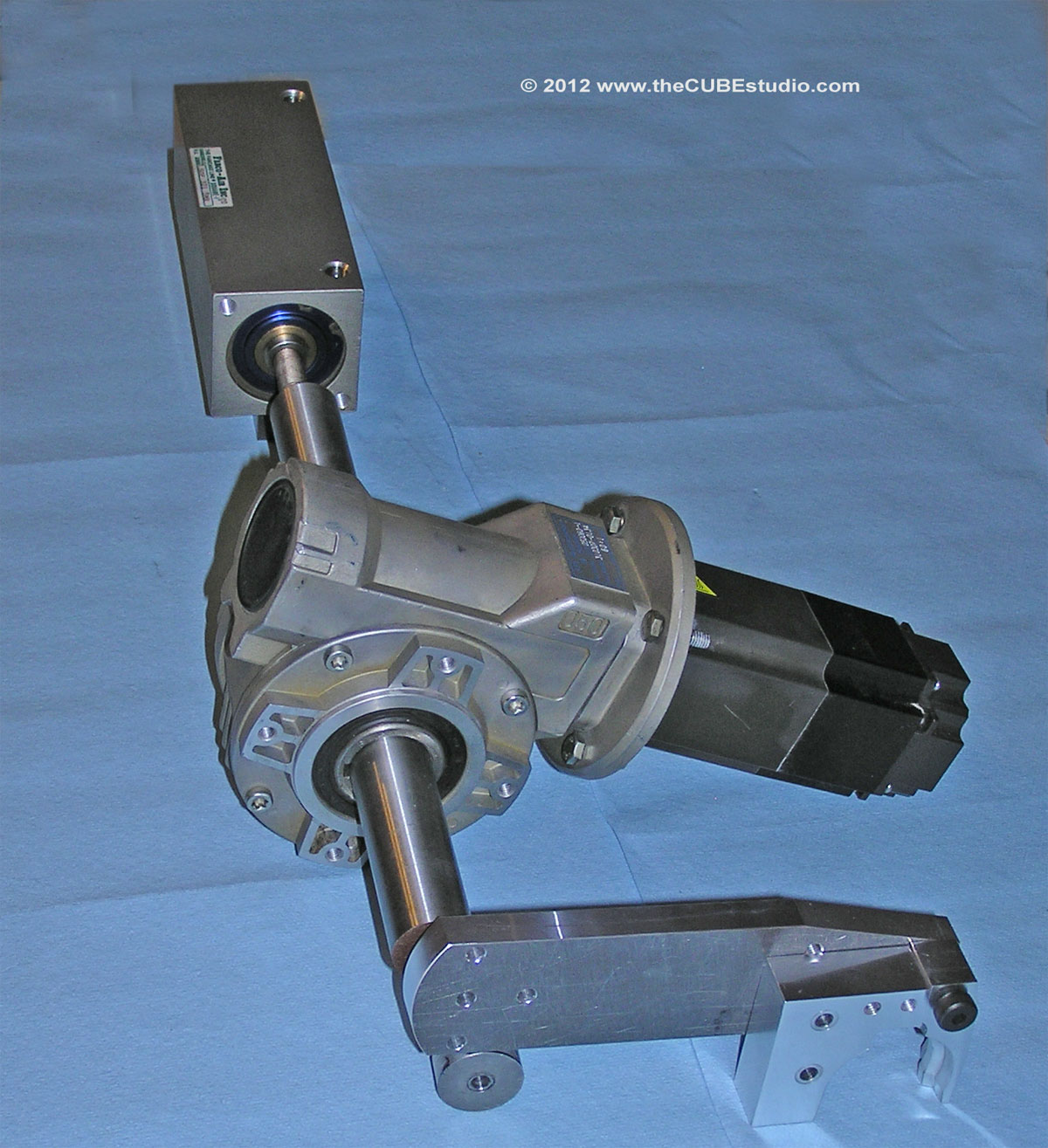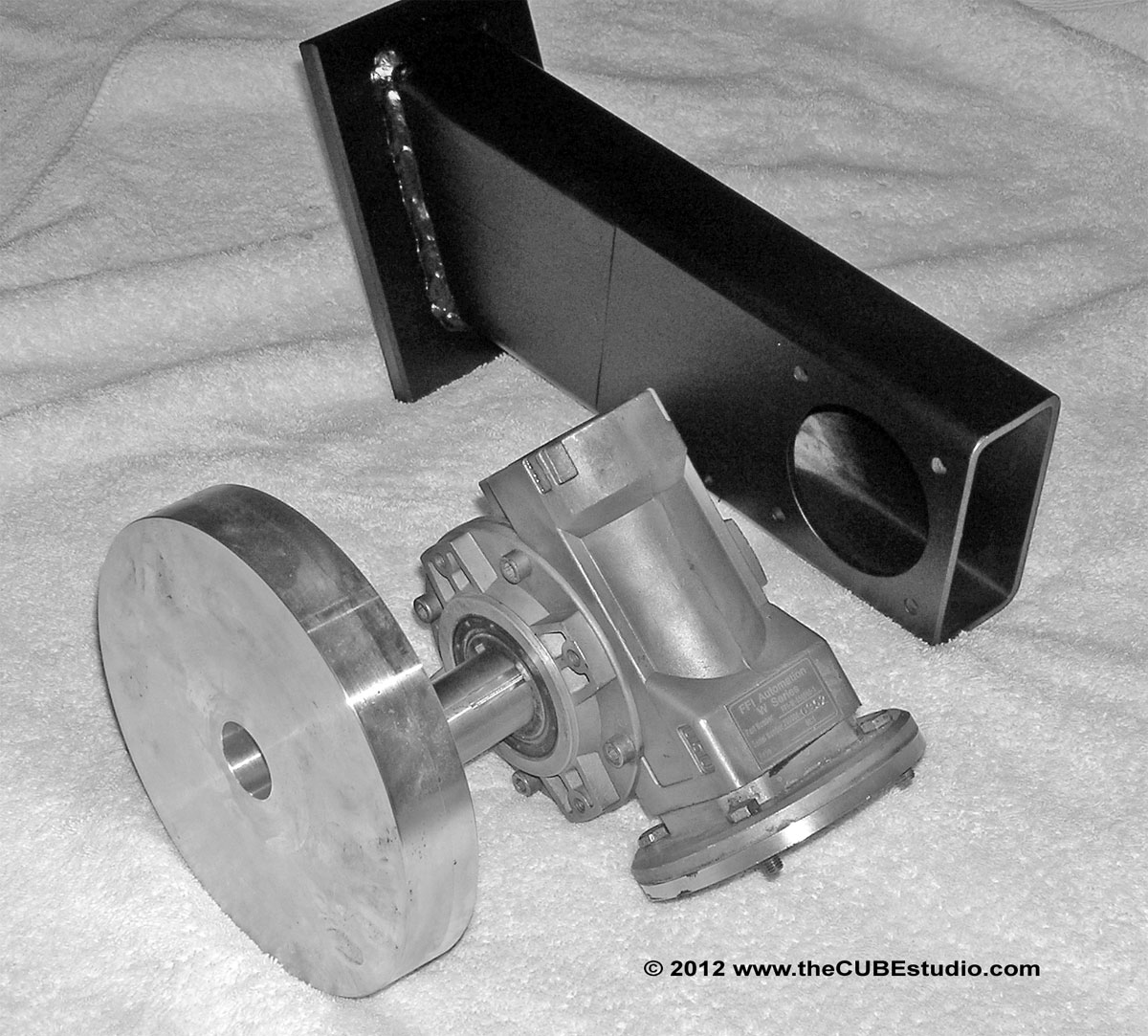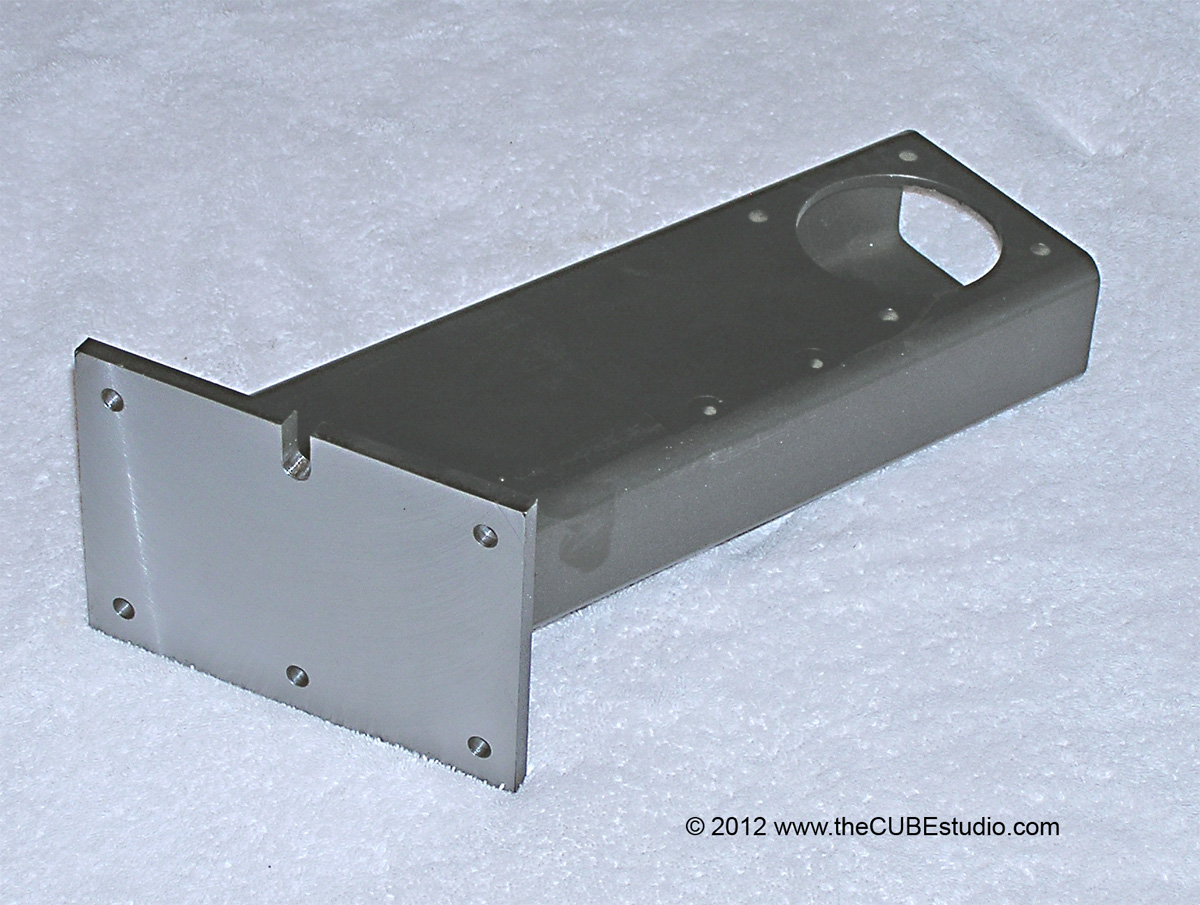Wow, see there, you got a lot of responses already!
Mitsubishi drives (and to a degree, all industrial drives) are tricky to interface with Mach becuase they use 24V signals . . except for the step/dir . . which are 5V differential.
You can run the step/dir single ended as shown in the manual if you follow the diagram precisely, however, since you have to drag out the soldering iron and some chips, you may as well do the coversion to differential.
What is a differential signal and why is it good?
A differential signal is one in which the signal is divided into a positive and matching negative voltage on separate lines which are twisted together in the cable. The theory is that any interference picked up will be picked up equally by both wires. Since the wires are opposite voltages, the inteference will automatically cancel at the recieving end. This is why CAT5 and CAt6 cabling can be unshielded I am told. If I have this wrong, some of the electron guys can chime in and correct or add to what I have said.
Back to the Mitsu; what you have to be VERY careful of is that the OUTPUT side of the drive is not protected and is very easy to overload . . i.e. magic smoke . . bye bye drive. The manual has clear diagrams on how to connect loads to the outputs, but it also assumes that the reader understands the concepts and can do the calculations needed so while there IS a diagram, there is little else in the way of instruction or guidance for the novice.
A very large problem is that there are posts in the CNCzone forum that detail exactly how to wire the Mitsu . . incorrectly . . and following those instructions will instantly fry your drive.
The method I took was to develop interface boards that isolate the 24V Mitsu signal from the 5V TTL BOB signals. The Mistu can be configured different ways, but I chose to have the signals be 'ON' when they are grounded back to the Mitsu. Here is one of those places where RTFM is in order if the options are interesting to you.
So, in a nutshell, I run the Mitsu OUPUT signals to an opto isolated 'switch' which then takes the BOB's own 5V signal and sends it back to the BOB. The Opto draws an infinitesimal amount of power which cannot hurt the Mitsu output and it 'switches' the BOB input on and off. A side benfit of this scheme is that teh voltage difference is taken care of and the drive is completely isolated from any 'events' which may occur in the BOB . . for example an incorrectly installed solenoid or other coil.
On the input (top the drive) side I do the same, but in reverse. The 5V BOB signal goes to the input side of the opto and the 'switch' side of the opto in turn routs the Mitsu 24V signals to the MITSU ground . . note do not mix or connect the signal grounds. DO ground the Mistu drive FRAME to the CNC earth ground.
The same methodology applies to the Mitsu J2S and the newer Mitsu J3. The only difference being the J2S has its own internal 24V supply whereas you ahve to supply the 24V to the J3. Here are the interface boards:

 That thing is just a freak!
That thing is just a freak! 








